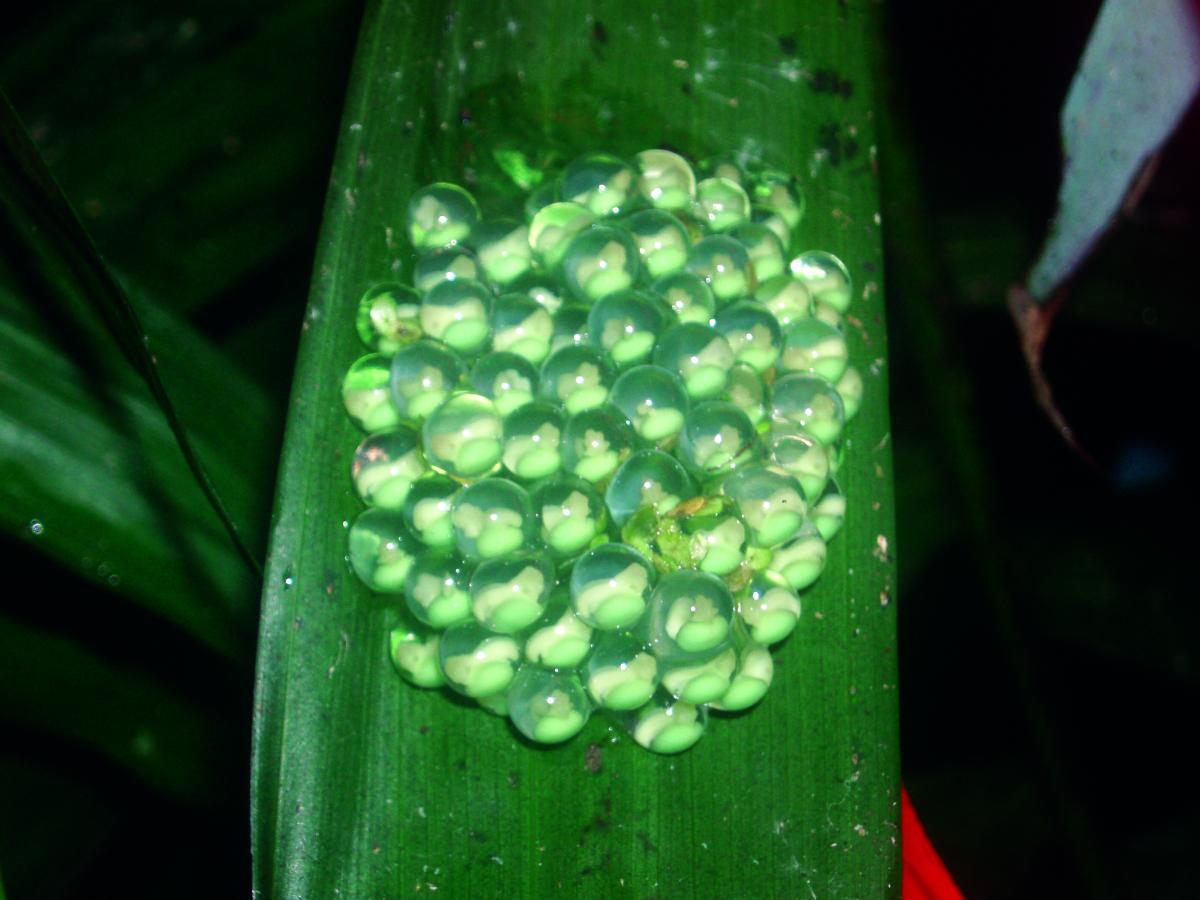Headstarting Blue-Sided Tree Frogs in Costa Rica
Using the IUCN SSC ex situ guidelines, CPSG Mesoamerica led a workshop to help Simón Bolívar Zoological Park manage a subpopulation of blue-sided tree frogs.

Photo © Eduardo Bolaños

Facts
Blue-sided tree frogs have a striking appearance: green upper parts; blue, pink, orange, and lavender limbs and flanks; and yellow orange eyes. As a result of this beautiful coloration, the species is popular in the international pet trade.
Small, fragmented populations of the species persist only in disturbed sites surrounding San Jose, Costa Rica.
Blue-sided tree frogs lay their eggs on the underside of leaves that hang over bodies of water. When the tadpoles are developed, they fall or wash into the water during a heavy rain. As temperatures increase and the dry season lengthens due to climate change, alterations in rainfall and dropping humidity levels could disrupt the process.
The Situation
The blue-sided tree frog (Agalychnis annae) is an adaptable species once common in forested areas and disturbed habitats such as coffee plantations and gardens in Costa Rica’s Central Valley. Urban expansion decreased these habitats in the 1980s, and now these amphibians are restricted to fragmented sites within San Jose that have enough vegetation and access to water. One of those sites is a pond located on the property of Simón Bolívar Zoological Park. The zoo began planning a conservation project for the species and organized a workshop to define possible ex situ roles for the subpopulation located on site.
The Process
In 2016, representatives of the zoo met with herpetologists from the University of Costa Rica and other species specialists to discuss the management of the subpopulation of blue-sided tree frogs that lives on the zoo grounds. The main objective was to discuss a protection project that combined in situ and ex situ elements to maintain viability of the fragmented populations found within the city and the country. Led by CPSG Mesoamerica, the participants consulted the IUCN SSC ex situ guidelines and recommended a headstarting program to augment the wild population. They then drafted specific guidelines for management of the subpopulation within the property.
The Results
Eggs gathered on site for the headstart program have already produced tadpoles and metamorphosed into adult frogs. These individuals will either be released back into the habitat in the park, join other existing subpopulations in suitable habitats, or become part of exhibitions dedicated to education about the species. This is the first ex situ population in Costa Rica dedicated to research, environmental education, and supplementation of a natural population. Planning continues for the reintroduction effort, which will also follow IUCN guidelines and likely will genetically connect several sites where the species is currently found, as well as possibly repopulate protected areas where blue-sided tree frogs used to live.
More




